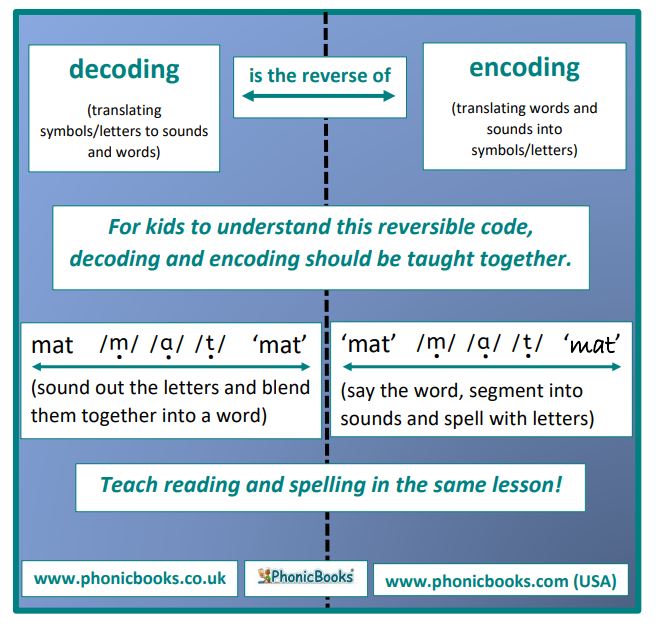There is nothing as rewarding as seeing the grin on a young reader’s face when they have just written a word that they can read and what’s more – you can read! The discovery that the squiggles on the white board can always be read by anyone at anytime is a huge “Ah ha!” moment for young learners. What they have just discovered is that all written codes are reversible. When we learn to crack the code and decode a word, we can then encapsulate that word and encode it so that others can read it. This may seem obvious to us, as fluent readers and spellers, but it is not obvious to beginner readers. In order to make this concept clear, we need to teach reading and spelling in the same lesson. When we are teaching kids to read the word ‘mat’ by sounding it out, /m/ /a/ /t/, we must get them to spell it too. This way, they can see how decoding and encoding are flip sides of the same coin.
Of course, words become more difficult to spell as kids learn the more complex part of the code and encounter multiple spellings of a sound. Still, we should always encourage them to spell words they have learned to read and to maintain the link between decoding and encoding. This will reinforce the concept that all words can be decoded because they have been encoded!

#teachreading #teachspelling #phonics #beginnerreaders

